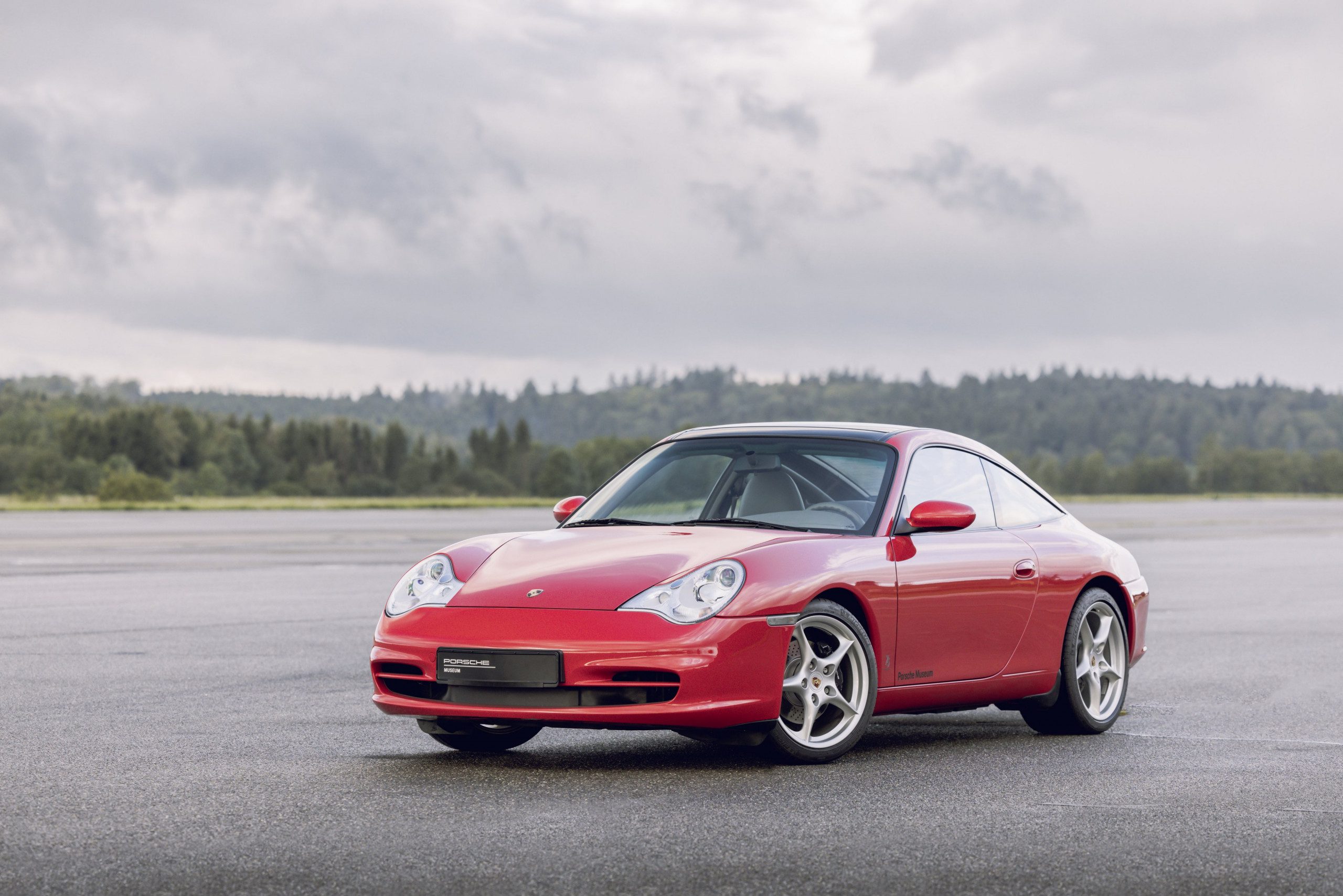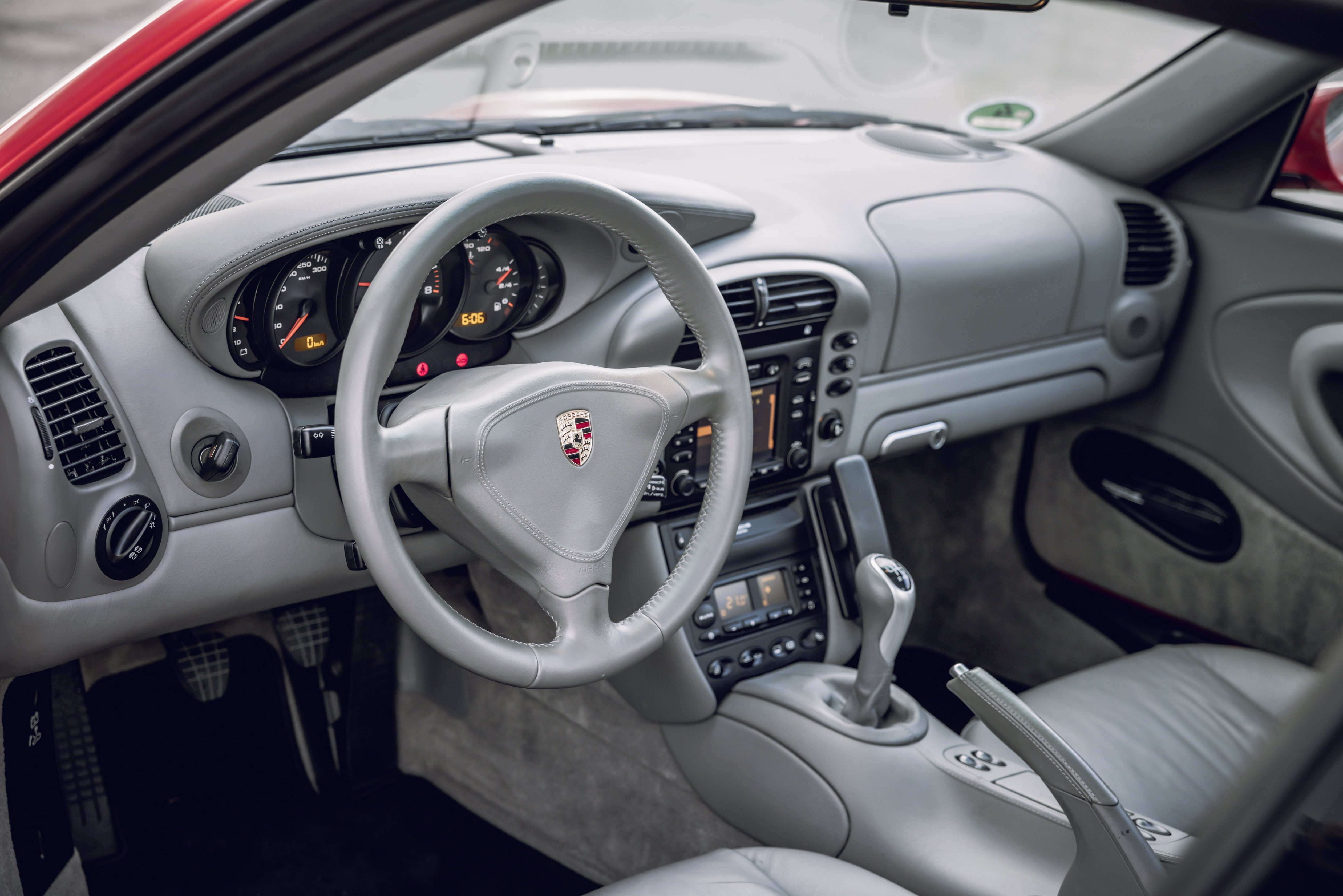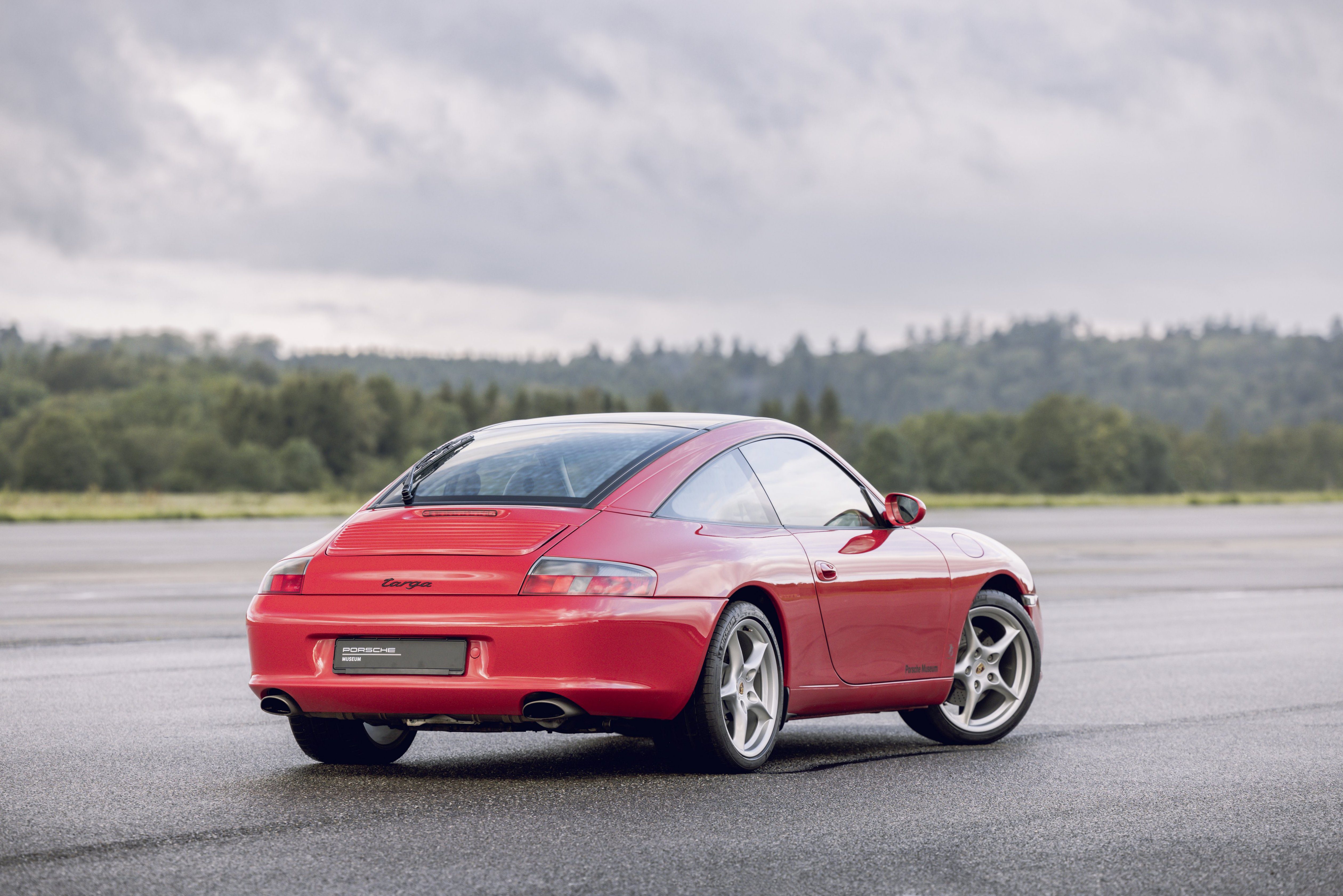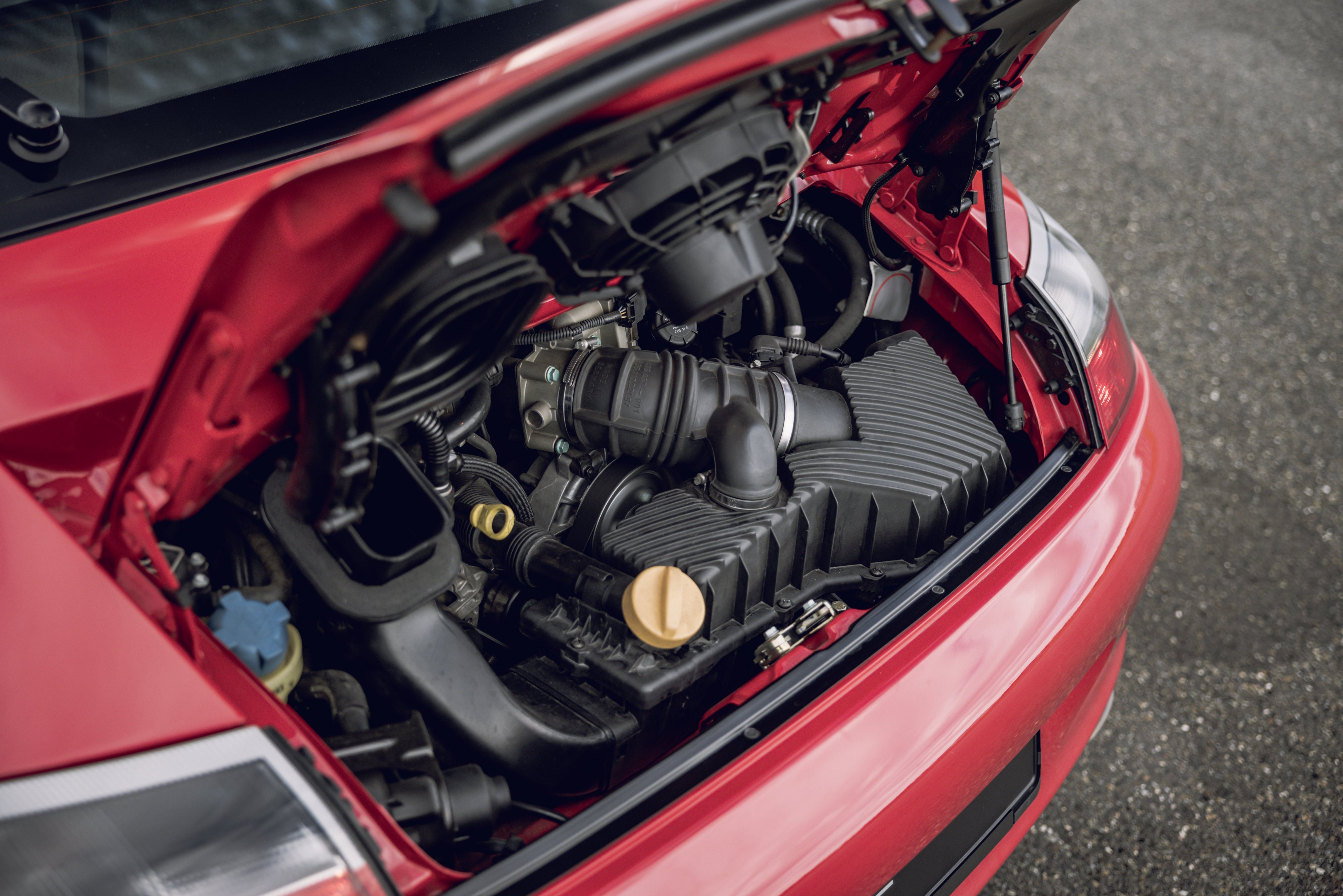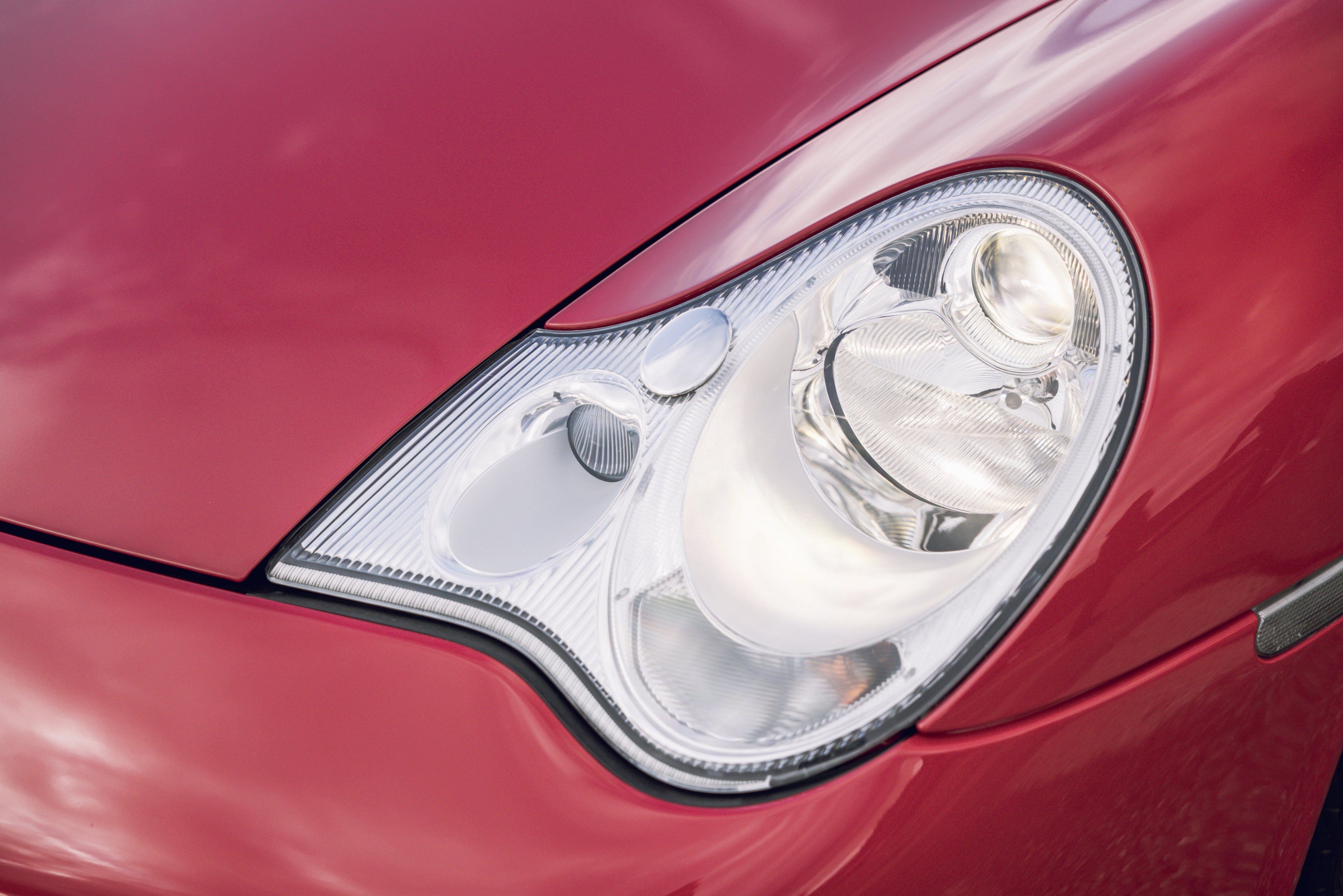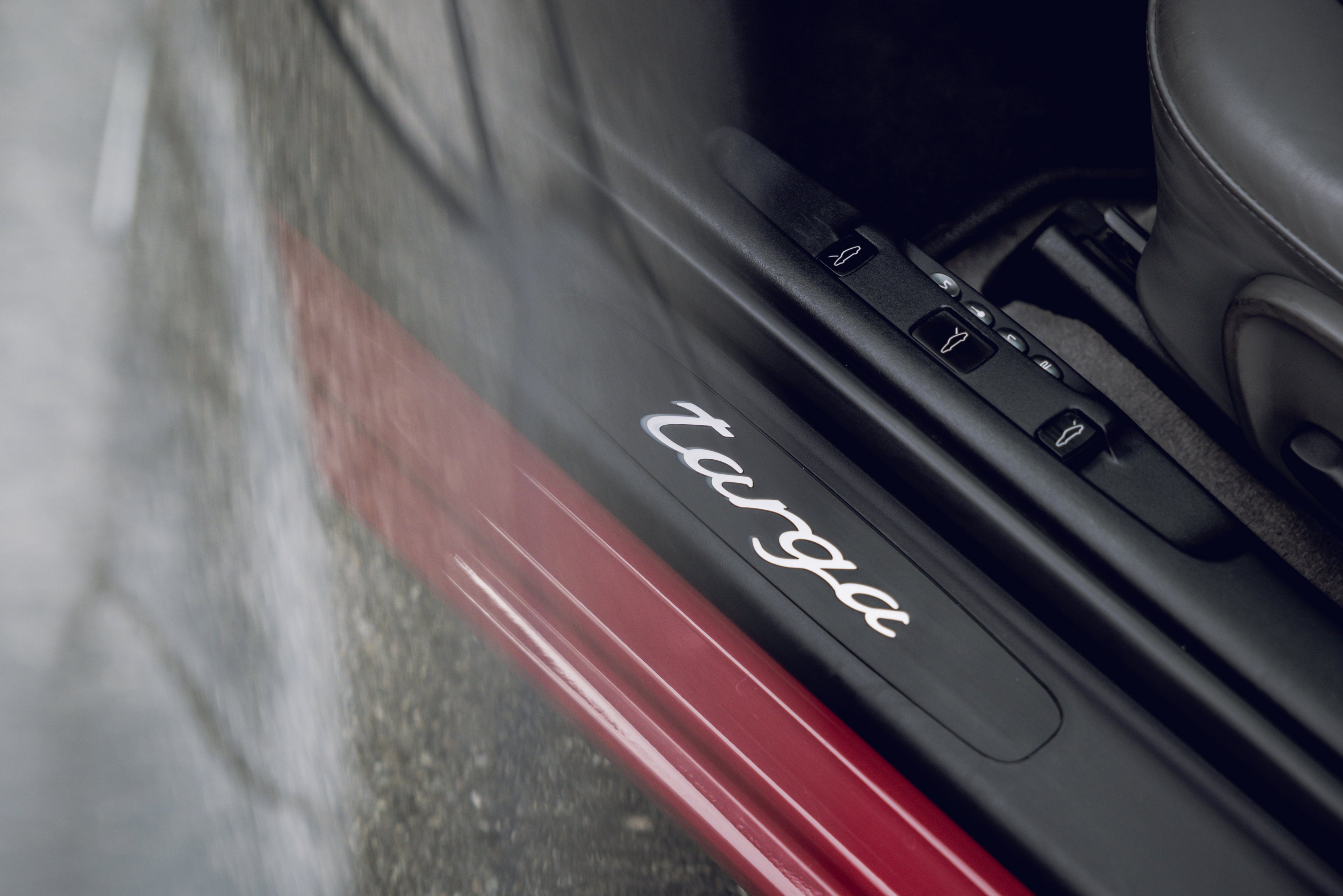While Porsche has been producing Convertible variants of its models since the 365 A in 1955, in 1965 the US government introduced increased safety requirements for open-top cars, with many calling for Cabriolets to be banned completely. To get around this, Porsche debuted the Targa concept, a car with a solid B-pillar and rear-windscreen, but a convertible fabric roof above the cabin.
The current generation (992) Targa will set you back at least £113,000, which is unattainable for many buyers. Buying nearly-new isn’t always a feasible option, either – the problem with 911s is that they hold their value very well. Therefore, buyers would be sensible to consider the 996-generation 911. It’s modern-enough to have Porsche’s water-cooled engine and a relatively modern design, but old enough that buying it won’t require a remortgage and/or the sale of an internal organ.
It might be almost ludicrously-priced, but the current 992-generation Targa is a certainly a looker.
Produced between 1997 and 2004, the fifth generation of the 911 saw some of the biggest changes to the previous designs. The engine was now water-cooled, the chassis had been fully replaced for the first time since the original 911’s release, and the exterior design had been completely overhauled. The car’s previous generation, the 993, was the first to have the ‘greenhouse’ roof system (which is also featured on the 996), and had a narrower cabin between the wheel arches, a feature which was removed for the 996, making the cabin wider and more comfortable. Despite being the infrequently bought option, it certainly wasn’t the slow one: the 996 Targa, which cost £61,588 when new, generated 320bhp and 273ft lb of Torque. It could go from 0-60mph in 5.2sec and had a top speed of 177mph.
The Targa model was the rarest version of the 996-generation. Only 5152 cars were made between 2002 and 2005, and, whilst the number of those that made it here is uncertain, there are only about 15 for sale (online) in the UK right now. The roof was made of glass and opened backwards, slotting itself inside the rear window, exposing the driver to the sound of the 3.6 flat-six engine that the car sported.
In terms of modern-day ownership, you could get your hands on a high-mileage 996 coupe for under five figures but a Targa, and certainly a low-mileage Targa will certainly fetch over £10,000 with the cheapest on AutoTrader sitting just under £13,000, with most hanging around the £20,000 mark. The car sits in Road Tax Band K, so another £325 per year will cover that.
As the 996-generation approaches its 30th birthday, its differences to other generations of Porsche’s flagship model are clear. The 996 is only 1305mm tall, 4430mm long and 1770mm wide, making it far more capable of skirting around English back roads than its modern counterpart, and almost certainly easier to park! Differences between the 996 and the 993, its predecessor, include a longer wheelbase, and only one floor-hinged pedal (accelerator), compared to three on earlier models. The new, water-cooled engine was quieter than the air-cooled ones, but the flat-six was still pleasantly audible. One physical attribute which featured on the 996, the 993 before it, the 997 after it, and every other Porsche, is that the beautiful, analogue rev counter sits in centre stage behind the steering wheel.
On the whole, the 996 Targa would certainly be a good way into the Porsche world. It’s old enough that buying one won’t cripple your savings for the rest of your life, but new enough that it has Porsche’s air-cooled engine has a modern(ish) design. And with a price between around £20,000, how could you say no?
Buying a 996 Targa – What to watch out for
The 3.6L 996 Targa is Euro 3, so not ULEZ-compliant. This means that drivers will face a daily charge in Greater London, some parts of Birmingham, Bristol and other UK cities, a full list of which can be found here.
Over the years, owners of the 996-generation cars have faced problems concerning the engine’s intermediate shaft and its bearing. Damage to these parts could also have had a knock-on effect and caused issues with the oil pump as well as other elements.
The earlier water-cooled engine uses a particular type of sealed bearing on the intermediate shaft between the crankshaft and the camshaft drive, which is prone to leaking grease and failing, jamming the shaft.
There are various places on the car where oil leaks can happen, the most common being the rear main seal. If this leaks, removal of the transmission is required for access (if the car is a manual). If oil leaks onto the clutch, significant damage will be caused, and components of the clutch will require replacement. If this isn’t seen to, the slipping clutch can damage the flywheel, resulting in that, too, needing replacing; this will cost anywhere from £500 to £1500, the latter price being for an official Porsche one.
The 996’s air-conditioning condensers and cooling radiators live in the front bumper, and so are susceptible to a buildup of debris. These ducts need to be cleaned out regularly, because damaged radiators and air-con condensers cannot be repaired and can only be replaced. This could cost up to £350 to replace both.
Ensure that a fluid service has been performed on the transmission of your 996, whether manual or automatic. Whilst the transmission generally doesn’t cause many problems for a 996 driver, the automatic can sometimes be problematic, which usually spells replacement – with a cost of around £2000.
What to spend?
£13,000 – £16,000: high-mileage examples with a number of owners. Varying specs, but if you’re lucky, they might have a decent service history.
£17,000 – £20,000: mileage starts to get lower as the price goes up, and chances are that the car will have had fewer owners. Specs also might be higher, and a couple of the examples at this price might have had infotainment upgrades.
£20,000 and above: you should be seeing mileage below 70,000 at this level, as well as some variety of service history and the car generally in a better condition. Targas are only worth this money when you aren’t going to have to spend more after purchase: ensure that the car is has none of the major flaws referenced in the above section.
Still thinking about buying one?
Have a look at this example: Porsche 911 Targa, 2002, 62,569 miles, £19,996.
This automatic Targa has relatively low miles, 15 service records, and has had 7 registered keepers. The bodywork’s in great condition and the interior (which is finished in magnificent green leather), shows a bit of wear, but nothing too appalling for a car which is more than 20 years old. It’s got two keys and features the Tiptronic gear shift, the forerunner to Porsche’s current paddle-shift.
Would you buy a Porsche 996 Targa, or spend your money elsewhere?

